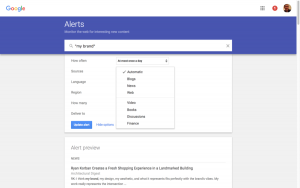The latest research on employee engagement and morale shows some disturbing trends. By some accounts, worker engagement is at its lowest in almost 10 years, with a whopping 17.5% of employees actively disengaged, essentially “checked out” and merely putting in the time with minimal effort.
Millennials seem to have the worst attitude, with fewer than 30% of this generation feeling engaged in their work. How did the “newness” of their professional careers wear off so fast? Many have chalked it up to a cultural change, citing this generation’s supposed self-absorption, lack of dedication and loyalty, tendency to get bored easily and seemingly overall feeling of dissatisfaction with the world. Others blame a tight job market and a still-recovering economy for keeping workers slogging through jobs they’d much rather leave, but feel pressured to stay.
What’s really driving your talent away?
The truth is that none of these may really be to blame for why morale in your organization—and across the board—is suffering. The harsh reality is that it may be entirely your own fault.
Poor management, lack of strategic direction (or failure to connect that strategy to daily tasks and projects), a disorganized work environment, poor resource planning and a tendency to invade personal time with work all create a toxic environment that can derail productivity, morale and engagement. As a result, employees are heading for the door, causing retention problems, high turnover and a recruiting challenge. In fact, many companies use turnover as a measure of employee satisfaction, but clearly that approach is too little too late. The damage is already done.
5 Ways to Right the Ship
In order to truly get a handle on a brewing morale problem, and stop driving employees away, employers and their management teams must be proactive in fostering employee engagement on a daily basis. And, while personnel matters are often considered the domain of HR, engagement issues must be addressed at the ground level, within teams and departments, one-on-one with employees.
Here’s how:
- Use tools to help manage work effectively.
In order to balance the workload and avoid overwhelming employees, managers must have visibility into the current work queue for their entire team, projects status and their expected completion dates. They also need the ability to see who has available bandwidth to take on more tasks and a system for triaging incoming work requests to make assignments appropriately.
Start by using a standardized work request protocol, and work management tools that allow you to see who’s working on what and where it stands at any time. Being well-organized and helping employees know what to expect next reduces frustration and stress, and ensures the work can be completed without excessive overtime.
- Enable productivity.
Whether it’s providing access to the right software or to the data they need for a project, employees shouldn’t have to struggle with simple tasks. Fewer struggles = happier staff.
Use templates for things like creative briefs and other commonly used documents and processes, so they don’t have to recreate the wheel every time. Real-time status reporting systems can eliminate time-wasting weekly status meetings, updating project spreadsheets and mad scrambles for the latest status when the boss asks for an update. Automate repeatable tasks to keep things moving through the pipeline without manual hand-holding. Use document sharing platforms to put the information they need within easy reach, so your staff doesn’t have to go chasing down colleagues for vital project information. And, by all means, ease up on the email. Instead, use a collaboration platform that allows staff to discuss and share ideas without creating inbox overload and the risk of critical information getting lost in the shuffle.
- Measure performance and productivity accurately.
The use of surveys and performance reviews only scratch the surface, and in some cases, may be entirely inaccurate. Will employees really be honest in a survey or interview if they’re unhappy or dissatisfied? It’s highly unlikely. And, if you’re still on an annual review schedule, you’re allowing far too much time to pass before checking in on the status of satisfaction.
To beat this, implement reliable project reporting mechanisms that measure morale based on success: how effectively your team is meeting deadlines, how well they communicate with team members, and how well their work contributes to strategic company objectives. In short, actions speak louder than words—they may not tell you they’re unhappy, but their productivity, interactions with team members, and quality of work will speak volumes.
- Prioritize realistically.
As a manager, you might have the most incredibly, highly productive, kick-butt team that is capable of outstanding work under intense pressure and tight deadlines. They might even seem to thrive on urgency. You may even be tempted to show off their awesomeness by committing to seemingly impossible tasks and deadlines to make yourself look good. Just don’t. You run the risk of beating them down, burning them out, and diminishing that urgency when it’s truly needed.
The solution to this problem starts with defining how your team will prioritize the work requests they take on. Will you use scorecards to see how well each request aligns with company objectives? A weekly allotment of hours for each department? The request’s due date? Choose criteria that your team and your organization can abide by, and stick to your guns. By adding this kind of structure to your prioritization, you replace guesswork and frustration with sweet, fair predictability.
- Be flexible.
Many employers and managers think that they must keep tight reins on employees in order to stay on top of how their work is progressing. Managers especially fear being out of the loop on what’s happening with the work they’re ultimately responsible for. But, the reality is, employees may actually be more productive when they’re not chained to a desk. The vast majority of workers crave flexibility in how, when, and where they work, which allows them to take advantage of the times, circumstances and environments in which they feel most productive and effective.
Instead of equating presence to performance and constantly watching over their shoulders, give your team a little freedom to work from home or to schedule flexible hours. Use technology that enables them to access work documents and data and collaborate from anywhere, any time to keep projects moving forward. A real-time project management system can be a crucial part of your tool belt, keeping an eye on deadlines, capturing interactions with colleagues, and tracking the status of each task and project. In short, give them a little wiggle room. You might be surprised how their morale—and performance—will improve.
Not Just an HR Issue
Employee satisfaction and engagement are not merely HR concerns—they’re work structure and management problems. In fact, fostering a positive work environment and job satisfaction should be a part of the fabric of company culture. Too often, poorly organized work, overbearing managers, unrealistic expectations and lack of the tools, resources and bandwidth to get the work done are the biggest culprits.
Measuring and improving satisfaction isn’t just about taking surveys and tracking turnover. The true measure is reflected in the day-to-day performance and interactions among your employees. With clear communications, effective leadership and efficient work management, managers and their companies can more easily read employees’ morale before they have one foot out the door and take swift action to improve the situation.
Business & Finance Articles on Business 2 Community(50)




